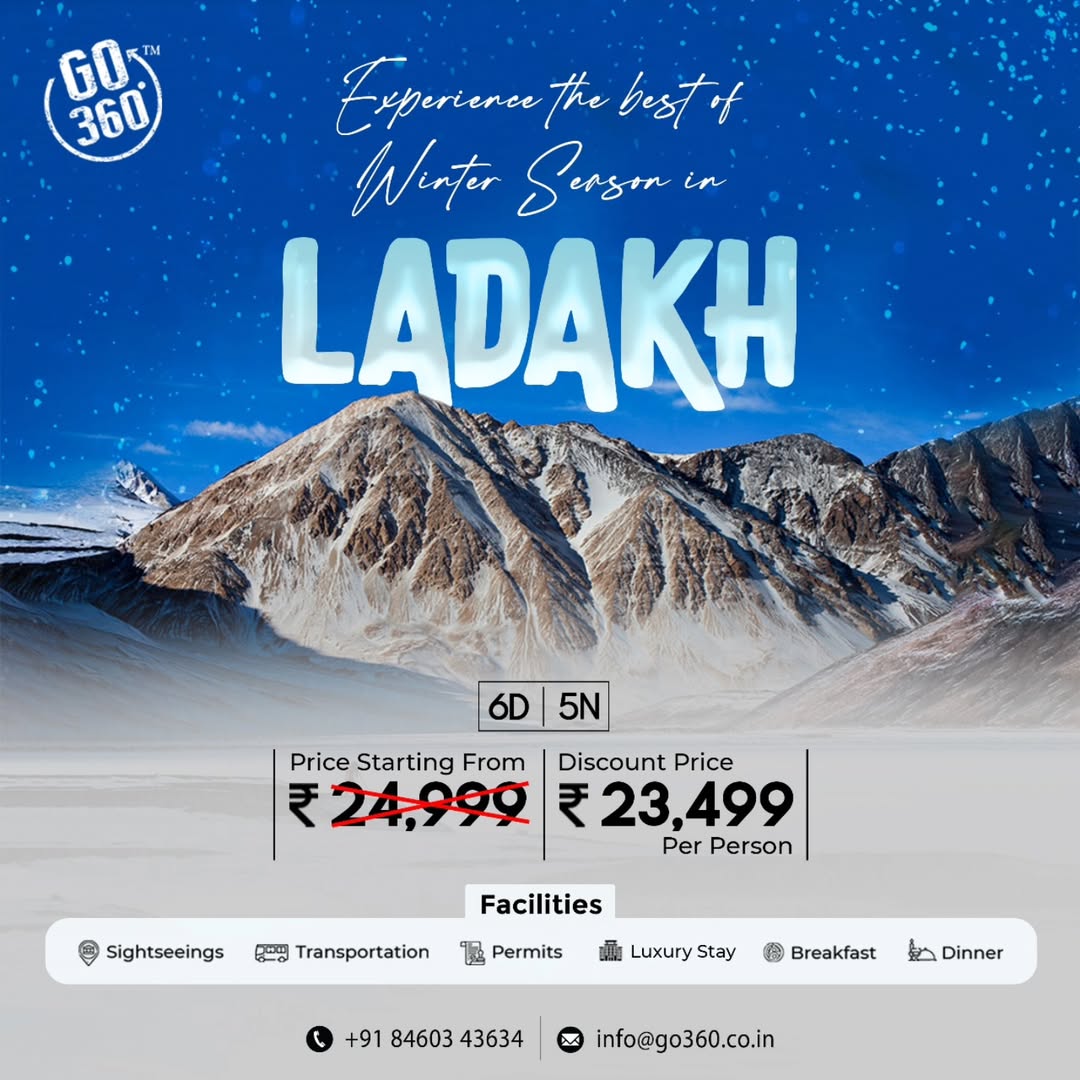Leh Ladakh, with its mesmerizing landscapes, rugged mountains, and serene monasteries, is a dream destination for many travelers. Whether you’re an adventure enthusiast, nature lover, or cultural explorer, this Himalayan paradise offers a unique experience. However, before planning your trip, you may wonder: Is Leh Ladakh safe for travel? In this guide, we will address the safety concerns, provide travel tips, and discuss the best ways to explore this breathtaking region.
Understanding the Safety of Leh Ladakh
1. Altitude Sickness and Acclimatization
One of the primary concerns for travelers visiting Leh Ladakh is altitude sickness. The region sits at an elevation of over 3,500 meters above sea level, which can cause Acute Mountain Sickness (AMS). Symptoms include headaches, dizziness, nausea, and shortness of breath.
How to stay safe:
- Spend at least 24-48 hours in Leh for acclimatization before heading to higher altitudes.
- Stay hydrated and avoid alcohol or strenuous activities on the first day.
- Carry medicines like Diamox after consulting a doctor.
2. Road Safety and Transportation
Leh Ladakh is known for its challenging roads, including high-altitude mountain passes like Khardung La and Chang La. The roads are often narrow, winding, and prone to landslides, especially during the monsoon season.
Travel Tips:
- If you are not an experienced driver, consider hiring a local driver who is familiar with the terrain.
- Opt for well-maintained vehicles, preferably SUVs or bikes with good ground clearance.
- Travel with a group tour to Leh Ladakh for added safety and guidance.
3. Weather Conditions and Best Time to Visit
Leh Ladakh experiences extreme weather conditions, with freezing winters and pleasant summers. The best time to visit is between May and September, when the roads are accessible, and the climate is favorable.
Safety Precautions:
- Carry warm clothing even during summer, as temperatures drop at night.
- Avoid traveling in winter unless you are well-prepared for harsh conditions.
- Check weather forecasts before heading to remote areas.
4. Permits and Documentation
Certain areas in Leh Ladakh require special permits, especially for foreign nationals and those traveling to restricted regions like Pangong Lake and Nubra Valley.
Essential Permits:
- Inner Line Permit (ILP) for Indian travelers visiting restricted areas.
- Protected Area Permit (PAP) for foreign travelers.
- Always carry valid ID proofs and multiple copies of permits.
5. Connectivity and Emergency Services
Leh Ladakh has limited network connectivity, with only BSNL, Airtel, and Jio providing services in some areas. Internet access can be unreliable, especially in remote regions.
Safety Measures:
- Inform your family and friends about your itinerary in advance.
- Carry a satellite phone or a walkie-talkie if traveling to remote areas.
- Know the locations of the nearest medical facilities, police stations, and army camps.
Solo Travel vs. Group Travel: Which is Safer?
While solo travel can be an enriching experience, joining Leh Ladakh tour packages can provide added safety and convenience. Group tours offer:
- Experienced guides who can handle emergencies.
- Shared resources like transportation and accommodation.
- A support system in case of unexpected challenges.
For first-time travelers, a group tour is highly recommended as it reduces the risks associated with high-altitude travel and unpredictable road conditions.
Wildlife and Environmental Awareness
Leh Ladakh is home to unique wildlife, including snow leopards, Himalayan wolves, and various migratory birds. While animal encounters are rare, it’s crucial to respect their habitat.
Eco-friendly Travel Tips:
- Avoid littering and dispose of waste responsibly.
- Follow trekking guidelines and respect local customs.
- Use biodegradable toiletries and minimize plastic usage.
Cultural Sensitivity and Local Etiquette
Ladakh has a rich cultural heritage influenced by Tibetan Buddhism. Travelers should respect local traditions and follow these basic etiquettes:
- Greet locals with a smile and a polite ‘Julley’ (hello in Ladakhi).
- Seek permission before photographing monks or religious sites.
- Dress modestly, especially when visiting monasteries.
Conclusion: Is Leh Ladakh Safe for Travel?
Yes, Leh Ladakh is safe for travel if you plan wisely and take necessary precautions. While altitude sickness, road conditions, and extreme weather can pose challenges, proper preparation and awareness can ensure a smooth journey. Whether you’re traveling solo or opting for a group tour, this destination promises an unforgettable experience. So pack your bags, embrace the adventure, and get ready to explore the mesmerizing landscapes of Leh Ladakh!









